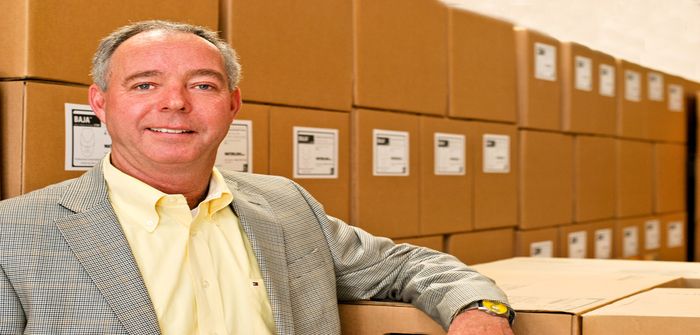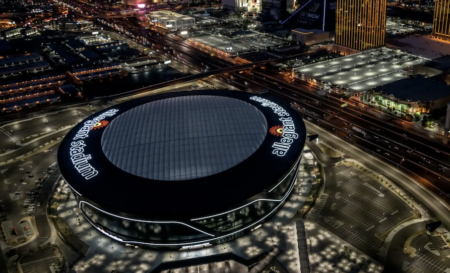Stadium operators are wising up to the need for increased water efficiency. Klaus Reichardt, CEO and founder of Waterless, details the methods some facilities are using to scale back consumption.
When it comes to water efficiency, which refers to long-term water use reduction, what’s happening in the USA is also happening in stadia around the world – they are eagerly searching for (and fortunately finding) ways to reduce water consumption.
However, this can be tough for many stadium owners and managers. After all, fans come to see their team play on a beautiful green field, which requires huge amounts of water. Food service operators expect there to be plenty of water for cooking, enabling them to carry out their business activities. And of course, thousands of fans will be using the restrooms, washing hands and flushing toilets.
Nevertheless, what got many US stadium owners and managers on the water efficiency bandwagon was the five-year drought that recently ended in California, as well as drought conditions in 36 states in the USA. Yes, they were looking for ways to scale back consumption even before this happened, but this five-year dry patch in California, apparently, was the tipping point.
The 21,000-capacity Staples Center in Los Angeles, California, (one of the busiest arenas in the world), and Levi’s Stadium in San Francisco, California, (which seats up to 70,000 people and is one of the largest parks in the world) consume millions of gallons of water every year. This is simply no longer sustainable in California – or most any area in the world.
However, these staggering amounts of water can and are being reduced. In fact, they have been so successful in California, that one of the newest – and what is being termed one of the greenest and most environmentally responsible – stadia in the world, Mercedes-Benz Stadium in Atlanta, Georgia, USA, has followed their lead and adopted many of the same water-reducing strategies.
We should add, however, there is no silver bullet. These arenas have reduced water consumption by taking a number of different steps. “There is no one single bullet at any sports venue to address water conservation by itself,” says Allen Hershkowitz, former director of the Green Sports Alliance. “It is a series of smart adjustments.”
Smart changes
To begin the process, stadium owners must start tracking water consumption more consistently. They have to know how much water they are currently using and how much it is costing. These stats will become their benchmark for moving forward, evaluating the effectiveness of their water reduction strategies.
You’d think this would already be happening, especially since these stadia use millions of gallons of water each year. But in the USA at least, water has been heavily subsidized for years. In other words, these stadia are often paying less for their water than it costs to deliver, store, treat and remove. Water has been cheap. But as these subsidies begin to lift, and water becomes much more expensive, we expect increasing costs to be one of the leading driving forces for stadium owners and managers to cut consumption.
When it comes to these smart changes Hershkowitz mentions, here are some of the standouts:
• Some stadia are installing off-the-shelf products, such as aerators, to reduce the amount of water released by faucets; kits are used to turn a more traditional toilet into one that is more highly efficient.
• If a kit is not used, traditional toilets are being replaced with high efficiency toilets that use about 1.25 gallons of water per flush.
• Sensor-controlled faucets and restroom fixtures have helped reduce consumption – however, owners and managers are advised to select high-quality, dependable, sensor-controlled systems that can withstand very heavy use.
• Underground sensors are being installed that transmit the field’s moisture level via wireless networks to managers and engineers; the days of irrigating the field based on set schedules are over. They are now irrigated when they need the water.
• Greywater and recycled water systems are being installed. These can prove very effective because greywater can be used for plant irrigation, helping to reduce consumption significantly. At Levi’s Stadium, more than 85% of the water used in the stadium is now grey or recycled. The stadium is dual-plumbed, with grey and recyclable water flowing into storage tanks and non-recyclable water delivered to sewers.
• Cleanup crews now pick up as much as 90% of the debris and trash left behind at some stadia, doing so by hand or using blowers or vacuum systems. In the past, much of this waste was pressure-washed away, employing thousands of gallons of water after every event.
• At stadia used for hockey, dehumidifiers are being installed. These help reduce ice melt and some arenas are also installing reverse-osmosis filtration systems to remove minerals from water; this creates harder ice for the rinks, reducing the amount of water needed to make the ice.
While not all these strategies are implemented in all stadia, one that is found in the California stadia and in Atlanta is the use of waterless urinals. There are several reasons for this. Yes, each urinal can save as much as 30,000 gallons of water per year – this we have known for years.
But another benefit that is getting more stage light in recent years is the fact that these no-water urinals typically cost less to purchase and install. That’s because there is no need to plumb the fixture for water and there are no flush handles, manual or sensor-controlled, to purchase or repair.
Water efficiency and PR
Earlier we mentioned that one of the key reasons many stadium owners and managers are actively looking for ways to reduce water consumption is to scale back on operating costs. While that is true, there is more at play here.
More and more people, especially younger people, are expecting stadia – not to mention entire sports leagues – to become more environmentally focused. Everyone can see, when thousands of people are attending the same sporting event, rock concert or similar, that vast amounts of energy and huge volumes of water are being consumed.
Today’s young people want to see resources of all kinds used more carefully and efficiently. In other words, it’s simply good PR to reduce water consumption.
A frequent speaker and author on water conservation issues, Klaus Reichardt is founder and CEO of Waterless, based in Vista, California.
October 25, 2017





